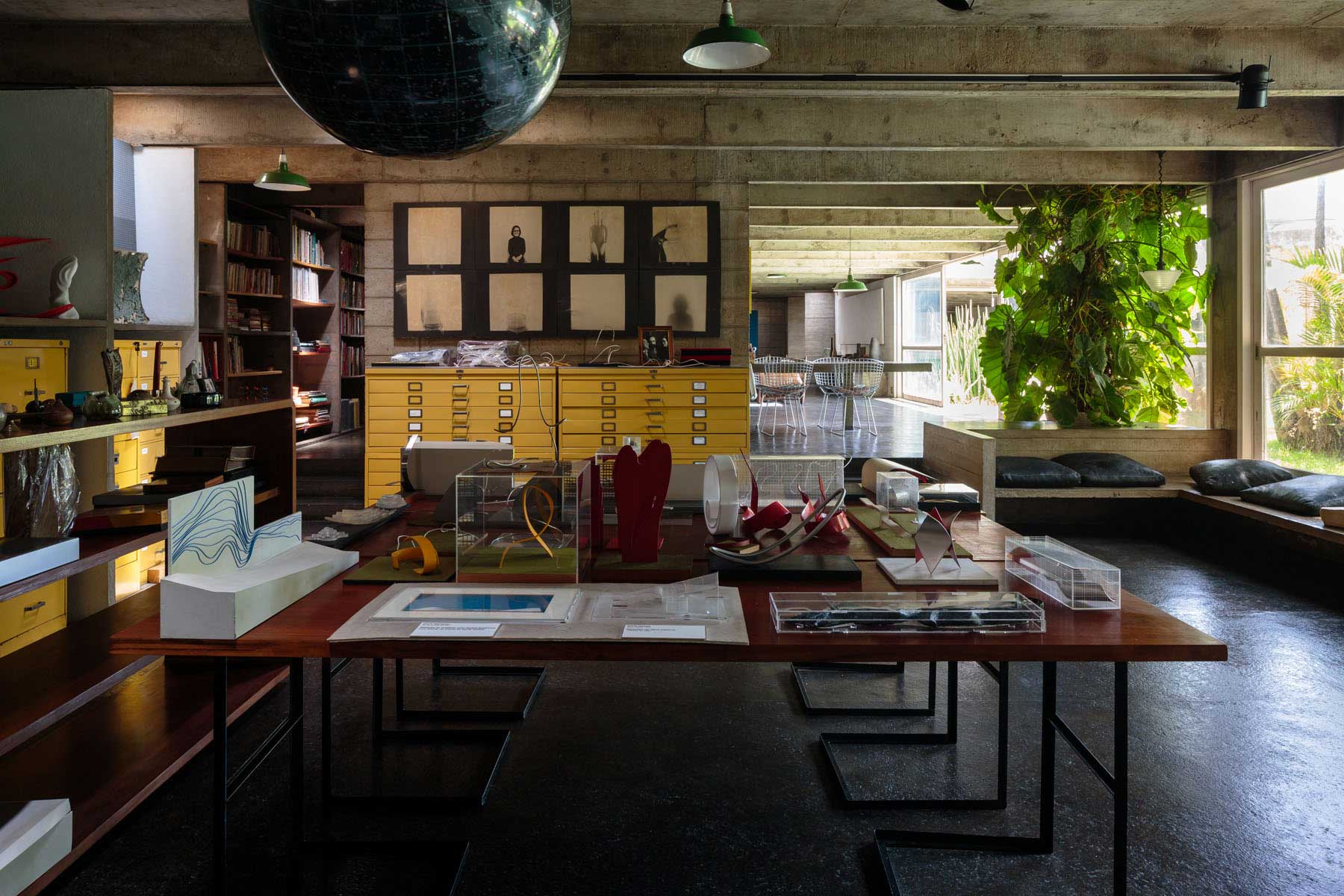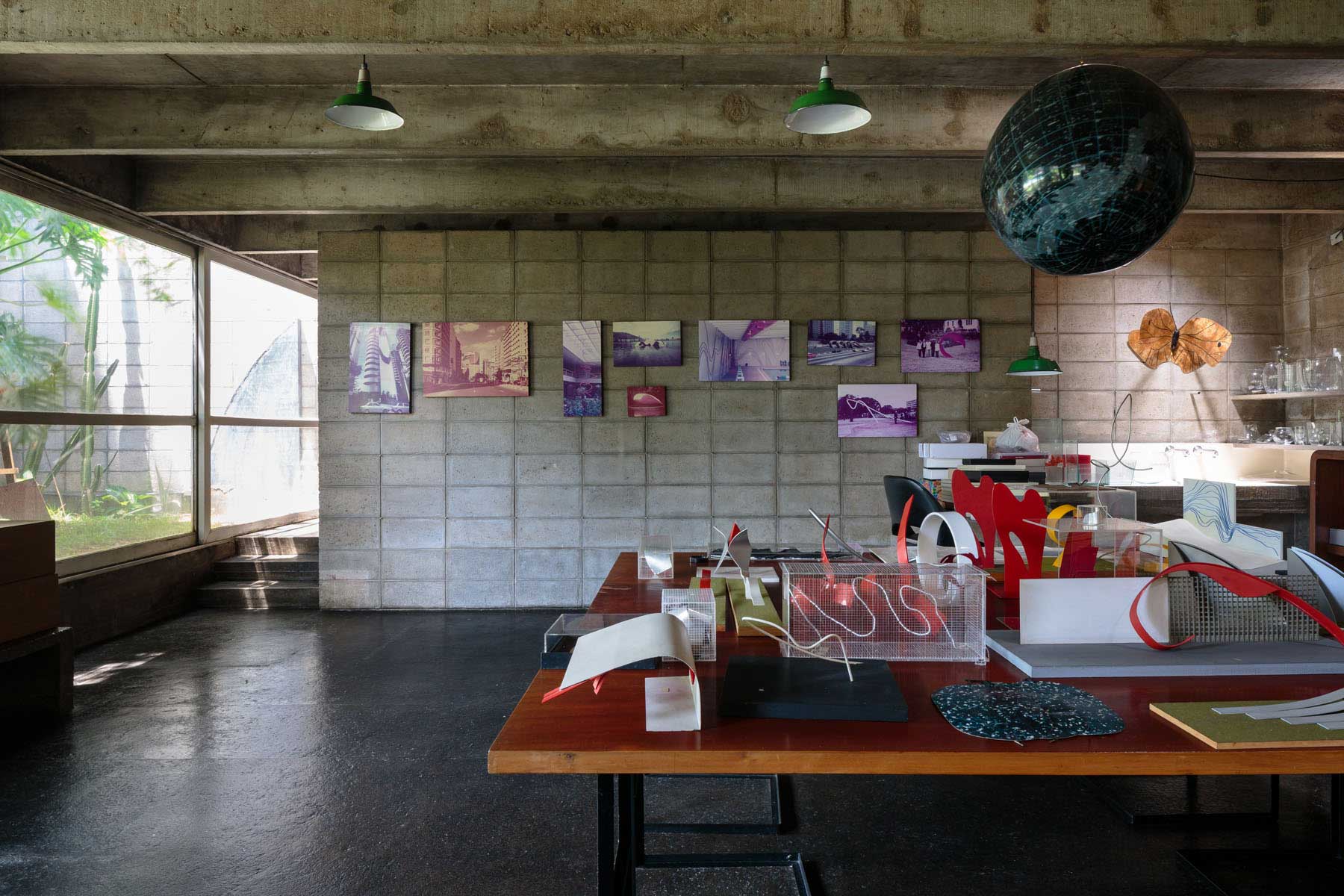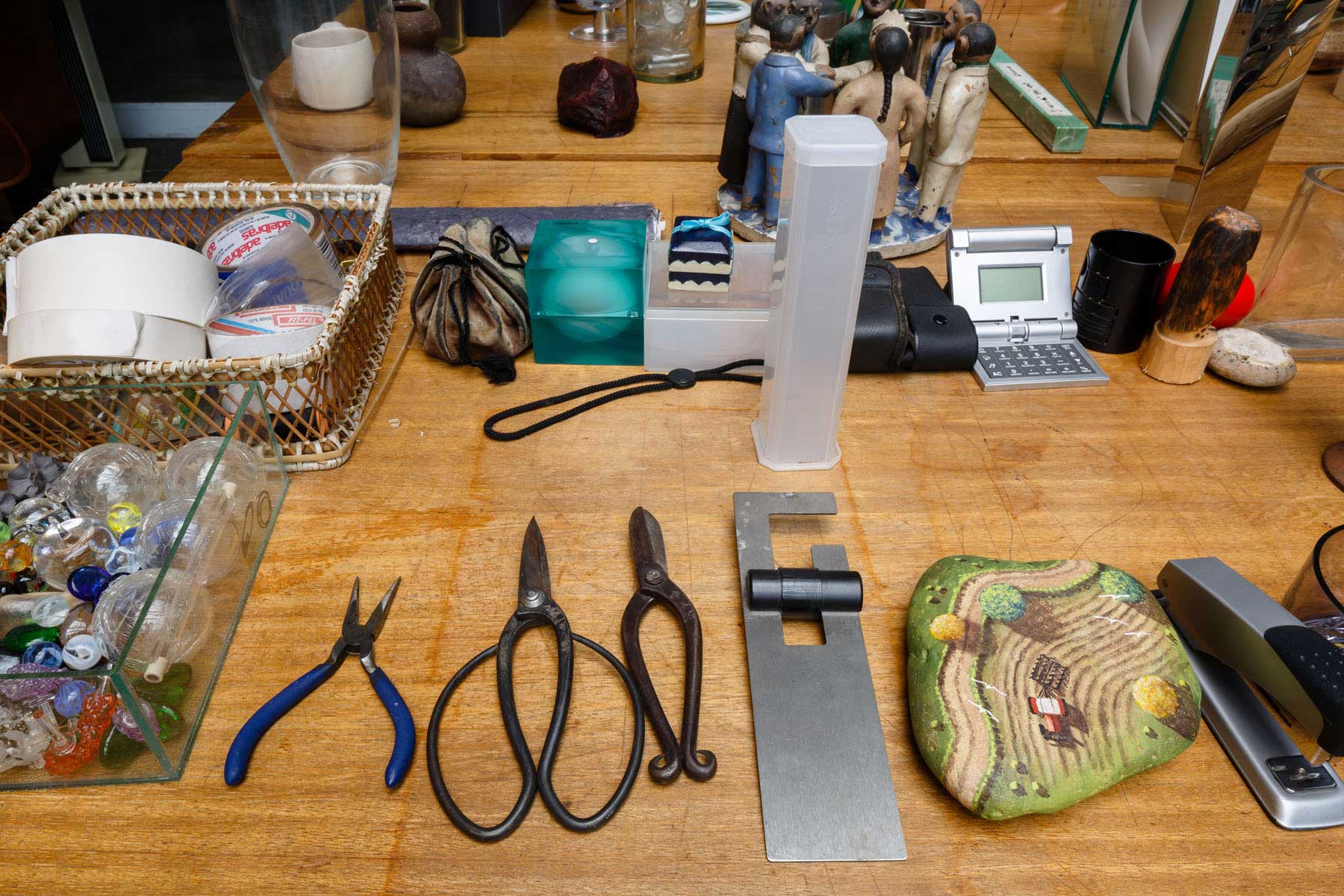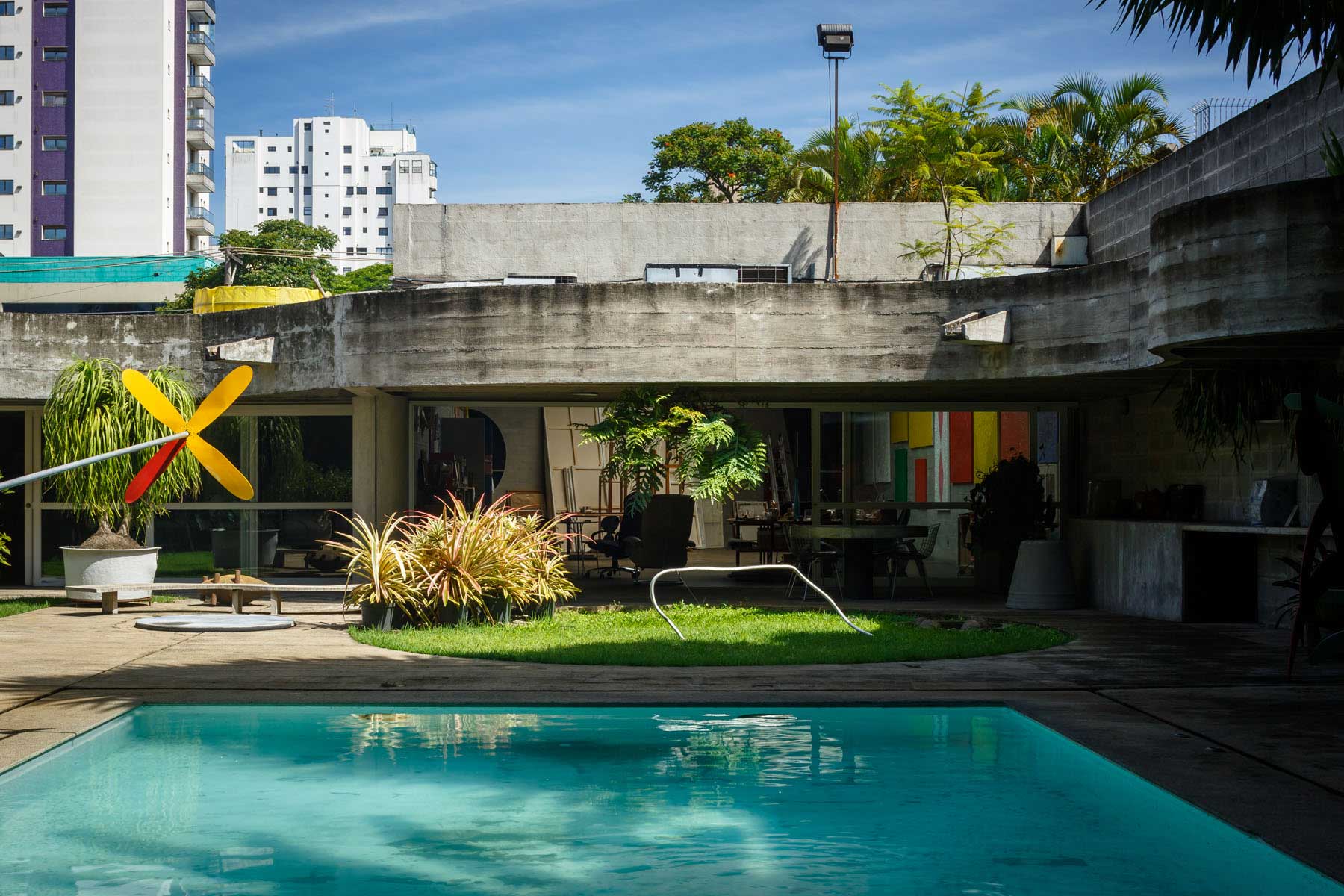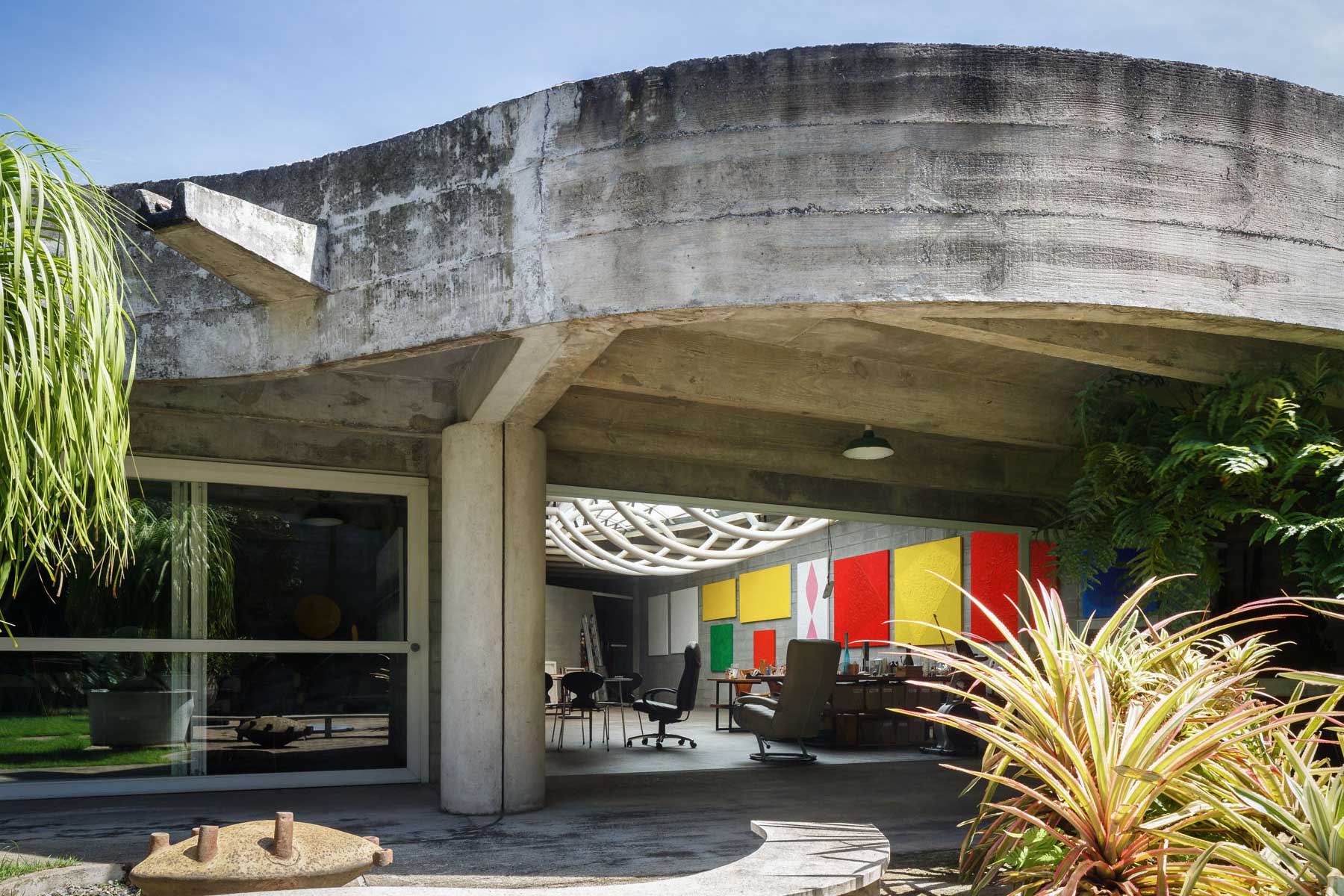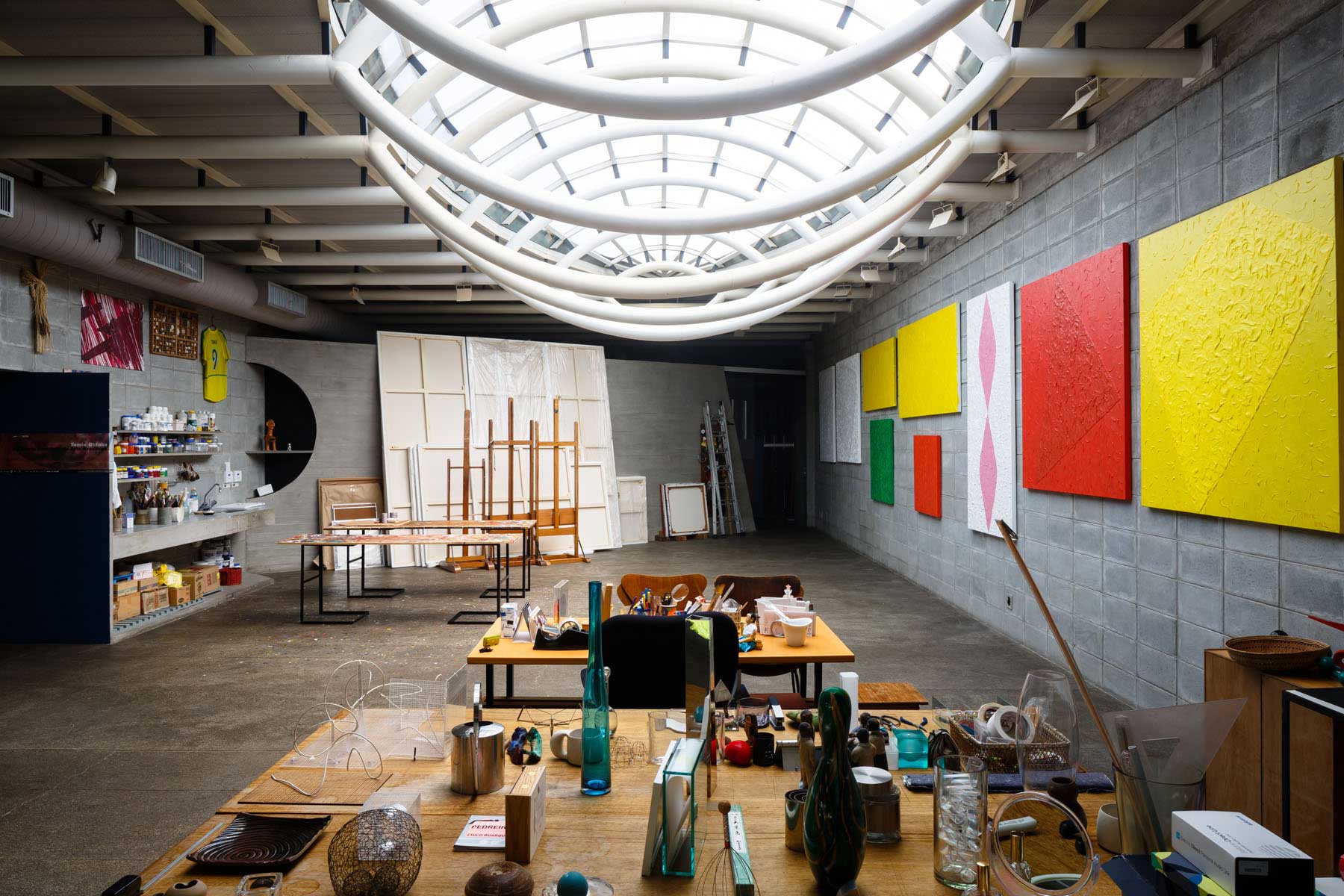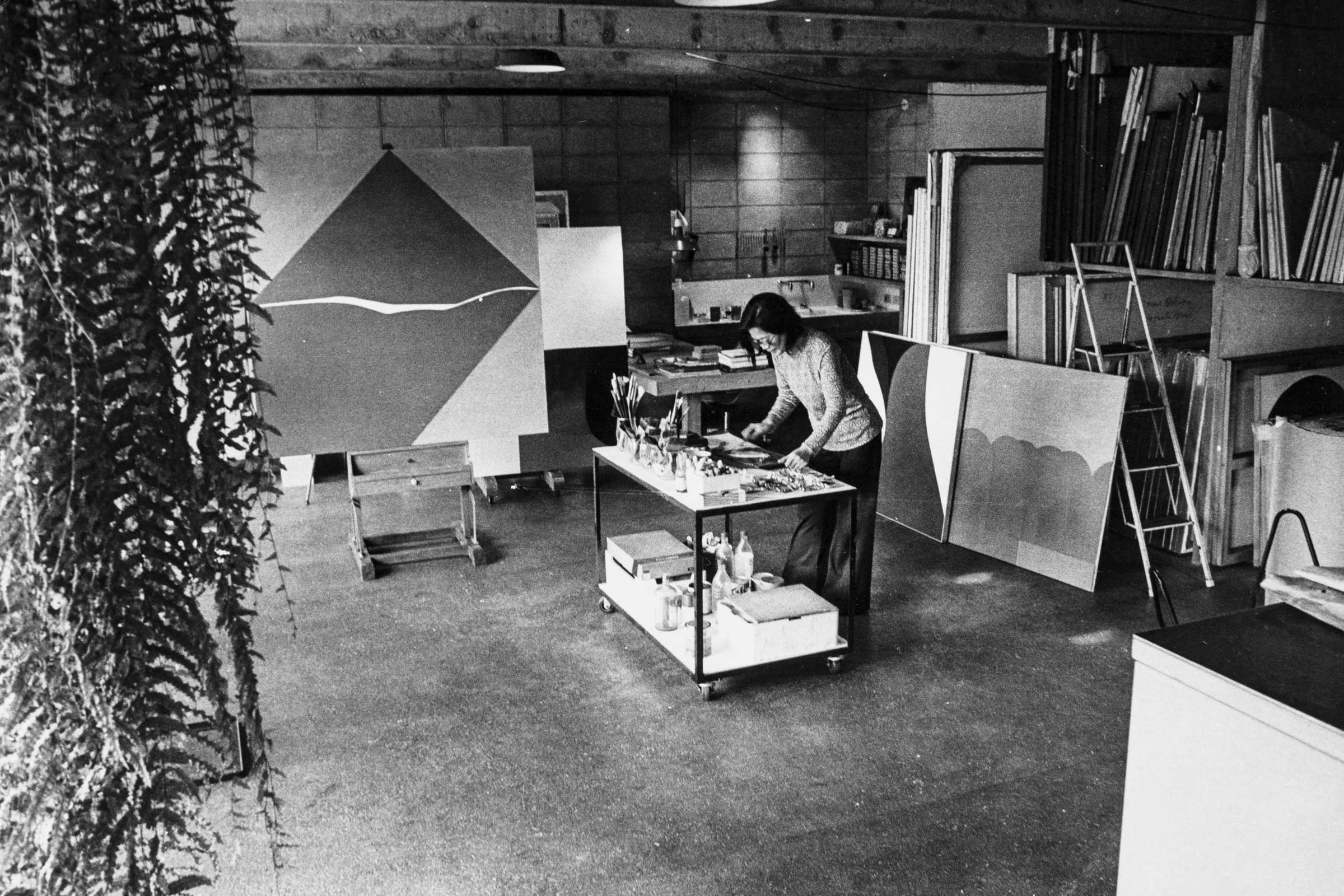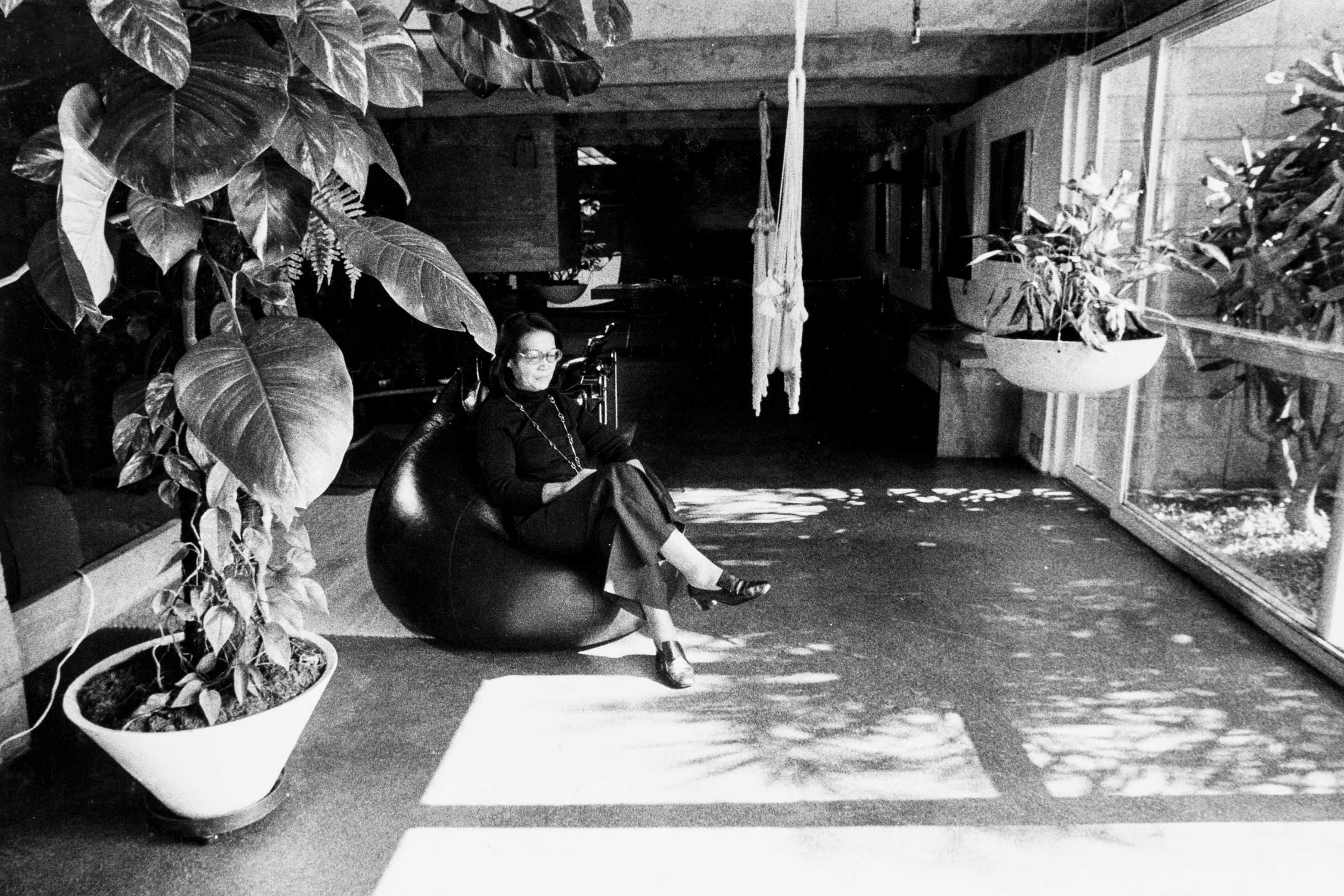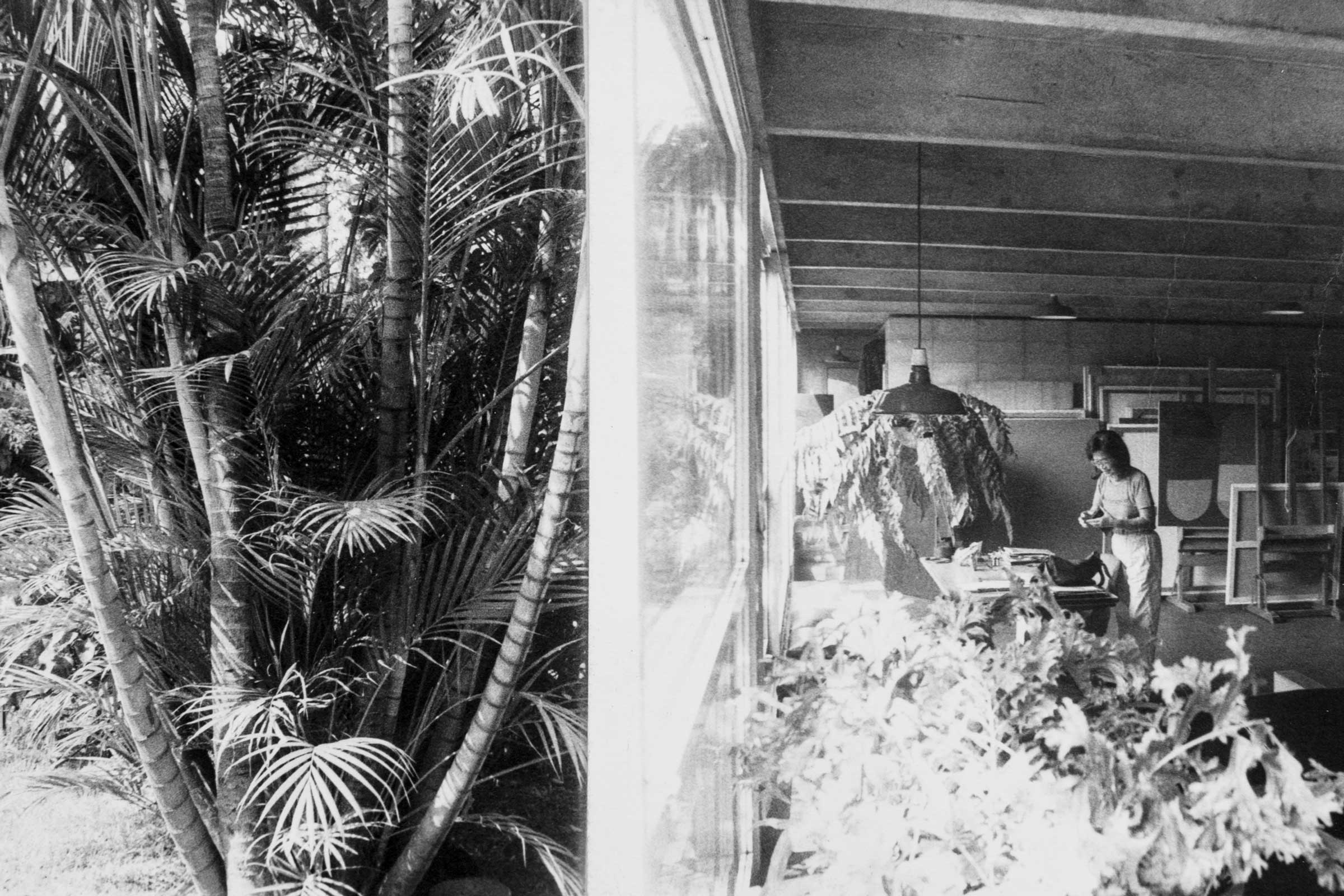Artist in Residence

In a leafy São Paulo suburb, the brutalist home and studio and of Japanese Brazilian artist Tomie Ohtake
Japanese-born, Brazilian artist Tomie Ohtake (1913-2015) is celebrated for her large-scale public art installations and abstract paintings, characterised by strong, monochromatic colour streams. Visitors to São Paulo today can experience Ohtake’s striking works on display through her many public sculptures scattered throughout the city, at The Tomie Ohtake Institute and, in the near future, the artist’s own home and atelier — currently undergoing transformation to become a new cultural space open to the public.
Born in Kyoto, Ohtake first travelled to Brazil in 1936 to visit her brother and when the Pacific War prevented her from returning, she stayed, making São Paulo her new home — a city that today plays host to the largest Japanese overseas population in the world.
Though Ohtake was drawn to painting from a young age, it was only after years of homemaking that she first truly devoted herself to her art at the age of 39. Her early painterly endeavours were encouraged by landscape artist Keisuke Sugano, another Japanese immigrant to Brazil in the first part of the 20th century. Building on this legacy, Ohtake’s work has come to represent a bridge between Brazilian and Eastern cultures, the calligraphic gesture echoed in the strokes of her paintbrush reinterpreted through Brazilian abstractionism.
Established in 2001 to showcase the artist’s oeuvre alongside that of others from the same era, The Tomie Ohtake Institute is now a respected centre for the arts in its own right. Louise Bourgeois and Yayoi Kusama rank among the high-calibre artists who have exhibited here, while a true highlight involves a visit to the leafy São Paulo suburb of Bello Campo for an intimate view into the atelier-home of Tomie Ohtake for those lucky few who are able to snag a private tour.
Designed in the ‘60s by Ohtake’s eldest son Ruy Ohtake, the brutalist structure was declared a monument of cultural heritage in 2014. Incorporating a studio and residence in one, the house offers guests an intimate glimpse into some of the artist’s more personal spaces. Ohtake’s bedroom, for example, is rather monastic, reflecting her simple way of living.
Upon entering, the ground floor is organised around an open-plan layout and relies on architectural cues to define the different living, study and studio spaces. Throughout, visitors are immersed in the home's varied moods, ranging from restful and studious to convivial. In the study, a red ribbon-shaped scale model of a public sculpture Ohtake created in 2008 to commemorate one hundred years of Japanese immigration to Brazil takes pride of place. Surrounding this, the walls are bedecked in works from her collection.
The largest concentration of works is left to be discovered in Ohtake’s studio, where the monochromatic grey of the concrete walls creates an ideal backdrop, offsetting her lavish works on canvas. Overhead, a glass ceiling is covered by a skeleton-like structure, as if the workshop was inside a creature, in isolation, swallowed in artistic immersion.
More than a mere place of retreat for the artist, Ohtake’s home is an embodiment of her life and creative path where her artistic spirit lives on.
Text / Cristina Sanchez-Kozyreva
Images / Courtesy of The Tomie Ohtake Institute

